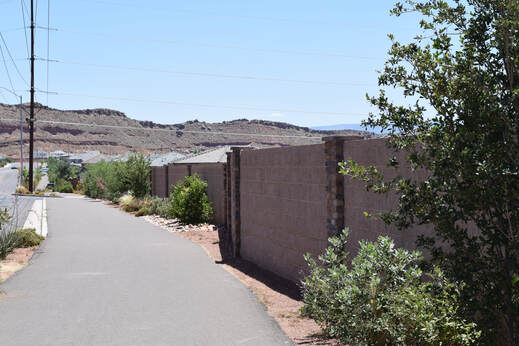Contact St George, UT Block Wall
The first step in having the best St. George masonry contractors providing you with the outcome you need is making the choice to pick up the phone and calling into the offices of St. George Block Wall. There you will be greeted by one of our knowledgeable professionals, ready and waiting to provide you with the information you need and the capability to book an upcoming service with ease. Whether you’re looking for a block wall calculator or need to better understand our block wall costs, you have the access you’re looking for with a simple phone call. We do away with any of the unnecessary interruptions to communication and instead focus on delivering the service details necessary to move forward in confidence.
Turning to the website of our local masonry contractors will provide you with the same level of ease and accessibility when it comes to the information you need. Rather than worrying about attempts at obtaining your personal details, you can be sure that our website is focused on providing accurate and reliable information when it comes to the variety of tasks our St. George masonry contractors have the capability to carry out. When you need the services of the best stone masonry company St. George has to offer, choosing to either pick up the phone and calling to speak with one of our professionals or turning to our online resources will ensure that you get the necessary details to get your task on the go.
Turning to the website of our local masonry contractors will provide you with the same level of ease and accessibility when it comes to the information you need. Rather than worrying about attempts at obtaining your personal details, you can be sure that our website is focused on providing accurate and reliable information when it comes to the variety of tasks our St. George masonry contractors have the capability to carry out. When you need the services of the best stone masonry company St. George has to offer, choosing to either pick up the phone and calling to speak with one of our professionals or turning to our online resources will ensure that you get the necessary details to get your task on the go.
What causes cinder block crumble?
Concrete blocks typically are hallowed in the center to reduce the weight, material, the cost, and to allow for other systems to be run through the blocks should it be needed. Most concrete blocks are made up of cement and coal ash, hence the name cinder blocks. Cinder blocks or concrete blocks are cheap and are fairly easy to use and are incorporated in many aspects of construction. Nonetheless, cinder blocks can become damaged over time through a series of different situations. Harsh weather or freezing on the inside and outside of a cinder block wall can cause the blocks to deteriorate. Water will cause the blocks to flake if they are not cured properly. Repeated rain and flooding will slowly break down the components of cinder blocks and could possibly infiltrate them. A little bit of water may be ok, but a persistent flow of water that comes in contact with the block will not be good. If a block is made poorly, then it may not be able to perform its proper function for very long. In that case you may try calling the manufacturer to see if there is anyway that they may be able to replace the blocks. Although cinder blocks are strong, a strong impact will crush them. For example, an impact from a truck or heavy object will break right through cinder blocks. Cinder blocks are also built for a certain amount of pressure to be exerted on them. If the pressure isn't balanced or an increased amount of weight is placed upon them, then they will crack and give out. These blocks will be great for smaller structures; however, may not be able to support the weight of bigger buildings. Luckily, these blocks can be replaced for a very cheap amount, and freezing and too much water exposure are uncommon within the Saint George area.
When did concrete blocks begin to be used?
Blocks over the years have evolved and changed in their composite material over time. The ancient civilizations of Rome and Egypt used stone blocks cut out of limestone to create massive structures such as the Parthenon and the Pyramids. These structures comprised of stone blocks have lasted the testament of time and show the durability of stone blocks, and the skill of stone masons. Bricks and stone blocks helped to build the structures of the British Empire and construct fortresses of the Middle ages. The first known appearance of the usage of bricks was in 8000BC in the city of Jericho. Back then, mud would be poured into small wood frames and let to dry. This technique was also used by numerous civilizations to build up their cities and walls. However, these blocks were not made of concrete like the ones often used today. Concrete was used in ancient Rome to hold blocks together, but blocks were yet to be made from concrete. Concrete blocks came about in the 1830’s in the United States when the first house was made with concrete blocks in New York. Since that time, concrete blocks have become very popular and are a mainstream construction product that fills many applications today. Over time these blocks have been redesigned in many different shapes and have become more durable to the weather with the help of added chemicals.


